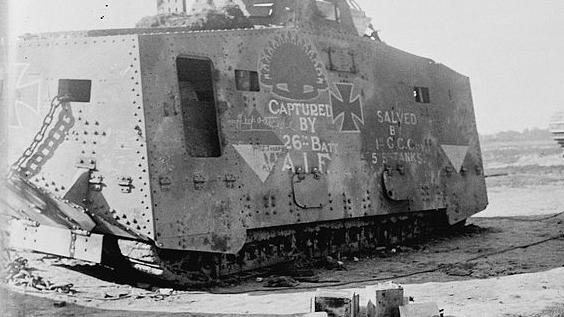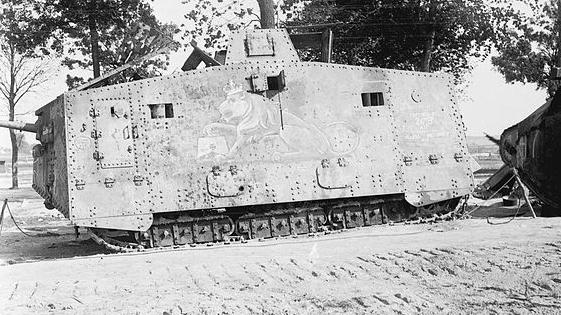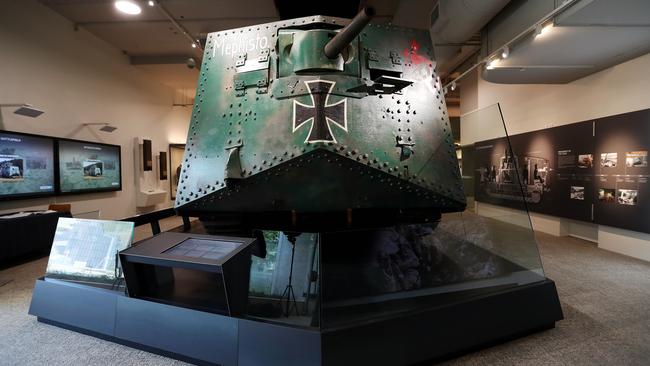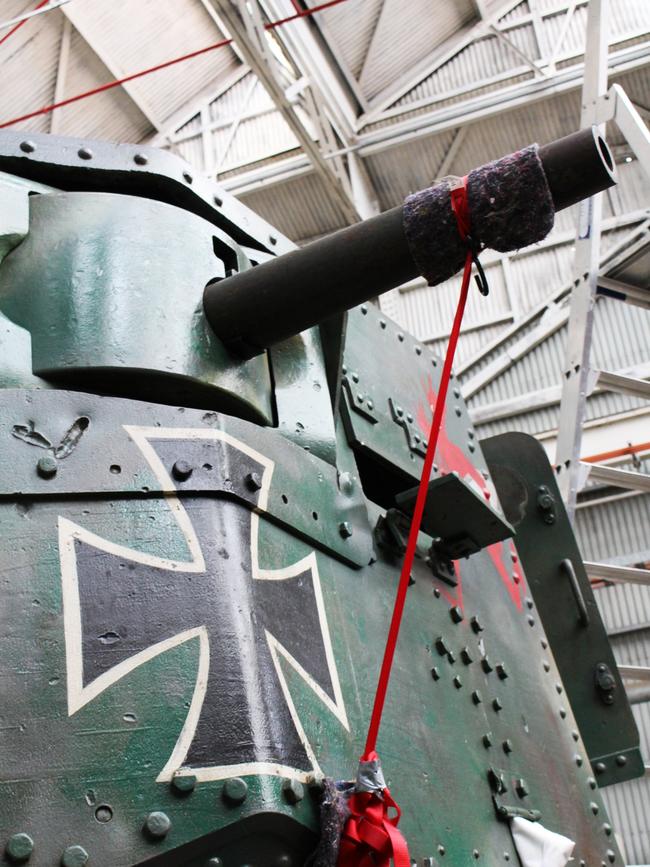Photographic treasures tell rare story of one man’s war
Two rare war time photos of the only surviving WWI German tank, which was ‘recovered’ by Australians, have been uncovered in France.

Two rare photographs of the only surviving World War I German tank, the Mephisto, which was “recovered’’ by Australians and sent to Brisbane, have been uncovered in France.
Raoul Berthele, a French chemical engineer attached to the medical unit of the French 16th Army Corp stationed in the war as a supply administrator for the ambulance unit, took 3000 images during the time of the Great War as he moved about the French countryside with the medical unit.
When French history teacher Louis Teyssedou, 40, was researching an Amiens 19th-century linen and textile factory that was used as a war hospital he uncovered the photo collection that had been donated by Berthele’s sister Beatrix to the town hall archives in Toulouse.
The Mephisto survived the war without being turned into scrap metal, pilfered by Australians under the noses of the Germans and is the prized war trophy on display in the Anzac Legacy Gallery at the Queensland Museum in Brisbane.
Over a century ago, Queenslanders had to fend off attempts by the British and Melburnians to claim the war prize for themselves.
“Raoul was attracted by mechanics and innovations,’’ Teyssedou said of Berthele, born in 1886, who had been using his chemistry skills in a Swiss perfume company when war broke out.
“These photographs, which are technically perfect, are a vision of his war. It is a treasure, a personal collection which gives a sense of the man and he had a deep instinct for photography.’’
Teyssedou, wrote a book, Lautre Guerre, about Berthele’s photographs and believes the picture of the Mephisto tank was taken in September 1918 on a road between Poulainville and Vaux-en-Amienois, north of Amiens.

Also of interest to Australians are photos Berthele took of Corbie, a town on the Western Front where many Australians convalesced from their injuries.
Mr Berthele often used a stereoscopic camera and produced his own images on verascope plates, photographing his many female friends, as well as fascinating images of planes, factories and the work of his medical unit.
The first German tanks were Sturmpanzerwagen A7 tanks, of which only 20 were built. Made with Daimler motors, and with Krupp and Roechling metalwork, they were named after various evil characters. Number 506 was Mephisto, a devil in German folklore.
With its white skull-and-crossbones on the front armour plating underneath a fearsome gun, the Mephisto terrorised the allies at St Quentin on March 21, 1918, and then at Monument Wood near Villers-Bretonneux on April 24, 1918. But on that April day the Mephisto was one of three tanks abandoned by the Germans. It had got stuck in a shell hole.
Several months later Lieutenant Colonel James Alexander Robinson who commanded the 26th Australian Infantry Battalion wanted to souvenir the 60 tonne tank, then situated in no-man’s land. On the night of July 23, under the cover of low-flying planes, two tank crews of Australians and British soldiers attached steel cables and towed the Mephisto 4km behind the frontlines.

Robinson told the Brisbane Telegraph 20 years after the war that the Germans were so displeased they had launched a gas attack against his raiders. He said the 26th Battalion, veterans of Gallipoli, Egypt, and some of the Western Front’s most vicious battles in Pozieres, Bullecourt as well as Menin Road during the Third Battle of Ypres, had come into the Villers-Bretonneux area only days earlier to straighten out the offensive line in preparation for a big attack that was launched on August 8, 1918.
The 26th chalked their name on the Mephisto alongside the 5th Tank Brigade and the 1st Gun Carrier Company, and a rising sun. A British lion was also painted, with a paw resting on a tank.
It appears that just before Berthele took the pictures, the regiment transporting the Mephisto, the 1/13th London Regiment, 56th Infantry Division, added its motto to the side, and various names of soldiers from the 46th Battalion were also graffitied.
After the war the Mephisto was taken to England and there was a verbal battle about its final destination.

Queensland agent-general in London, Sir Thomas Robinson, successfully argued that Australian units be allowed to keep their own captures and they were to be returned to the state from where the units originated.
The 26th, having been raised in Enoggera, Queensland, ensured their prize went to Brisbane, where the tank was moved into position off a steamship using steamrollers in 1919.
Berthele survived the war, but died of the Spanish Flu days before Christmas 1918.
Teyssedou said Berthele’s little sister kept the photographs all her life before donating them to the Toulouse authorities.
“She always talked about her big brother, whom she never saw again after he went off to the war,’’ he said.
Teyssedou has held an exhibition of Berthele’s photos in Amiens and is planning further exhibitions in Paris and Belgium.




To join the conversation, please log in. Don't have an account? Register
Join the conversation, you are commenting as Logout